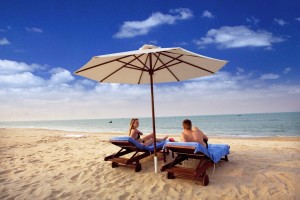
While it may only be “One Percent,” the number is big when it comes to who is traveling and what they are spending. In fact, according to a report released last week from MMGY Global and the Harrison Group, that sliver of the U.S. population just got a bit bigger.
Some six percent of U.S. leisure travelers now have an annual household income of $250,000 or more, compared to four percent in 2010. Also, now women comprise the majority (54 percent) of these affluent travelers, up from 42 percent in 2010.

A survey of affluent travelers showed they are planning more trips in the year ahead than travelers with more modest annual household incomes. They also intend to spend more on vacations in the year ahead. This group took an average of five leisure trips during the past 12 months and spent an average of $9,765 during that time period. They expect to spend $10,585 in the year ahead, showing an 8.4 percent increase in spending on vacations.
Additional insights on the behavior of affluent travelers from the 2013 survey include these findings:
• What is this Affluent Traveler Demographic? Affluent travelers are now more likely to be married (82 percent) compared with 77 percent in 2010. Affluent travelers are also older, with an average age of 49 in 2013 compared with 43 in 2010. And just one percent of this group was retired in 2010, compared with 14 percent today.
• The Destination is the Destination. Seven in ten (69%) affluent travelers took a vacation outside the continental U.S. during the past twelve months. The most popular destinations included Western Europe (52 percent), Caribbean (41 percent), Mexico (22 percent) and Canada (18 percent).
• Affluent Travelers Get Social. Affluent travelers report spending 40 minutes per day with social media platforms such as Facebook (69 percent) and LinkedIn (46 percent), while half (50 percent) are visiting online communities, travel forums or blogs to seek and/or review information about destinations or travel service suppliers, up from 40 percent in 2010. And more affluent travelers (29 percent) are authoring, commenting and/or posting content on travel-related social media sites, up from 17 percent in 2010.
• Traditional Media Consumption Trending Down. Affluent travelers spend significantly less time watching television per day (average of 2.8 hours) than they did in 2010 (average of 4.2 hours). This group also spends less time reading newspapers and magazines (average of 1.2 hours in 2010 versus one hour in 2013). And although readership of the printed versions of Sunday Travel sections in newspapers declined to just 30 percent of all affluent travelers in 2013 from 41 percent in 2010, this medium still reaches a large number of affluent travelers and, in particular, those over fifty five years of age.
• No Kids, Yes Travel. More affluent travelers have no children at home in 2013 (59 percent) compared with 2010 (40 percent), and have taken fewer trips with a spouse/another adult and children (mean of 1.5 trips) than in 2010 (mean of 2.3 trips).
• Surfing the Waves of Affluent Travel Habits. Affluent travelers spend an average of 3.2 hours a day online for personal use, with 94 percent accessing the internet from home, 74 percent from a smartphone, 68 percent from a tablet, 66 percent from the office, 28 percent from a gaming console, 26 percent from a smart TV and 23 percent from an e-Reader. Significantly more affluent travelers have downloaded travel apps to their smartphones now (49 percent) than in 2010 (27 percent).
• Digital Favorites for Travel Information. Nine in ten (91 percent) affluent travelers also use the Internet to obtain information about travel services or suppliers, including availabilities and rates. The most popular travel websites among affluent travelers include specific airline branded websites (53 percent), Expedia (46 percent), TripAdvisor (46 percent), specific hotel branded websites (45 percent), Orbitz (42 percent), Travelocity (36 percent), Kayak (33 percent) and Priceline (26 percent).
Similar Stories:
New Study Reveals What Affluent Travelers Want
Global Travel Trends Unveiled at WTM
Digital Traveler: Booming Trend Spawns New Elite

































































































































































































































































































Get Social